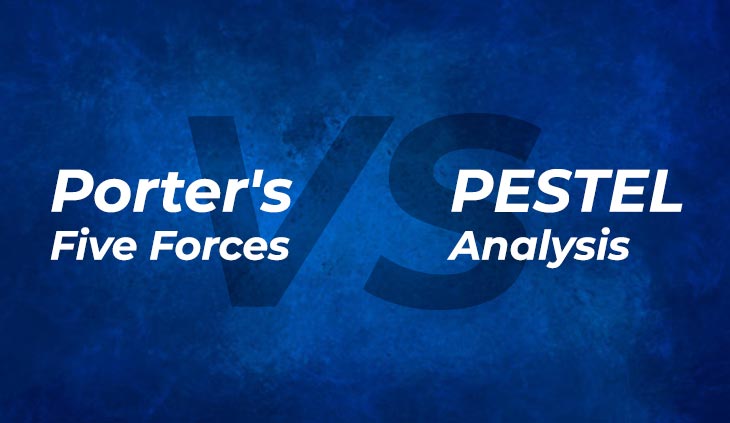
Comparing Porter's Five Forces and PESTEL analysis
By Dan Hadley MBA, BCOMM, CMC, IML
Porter's Five Forces and PESTEL analysis are both useful strategic tools used by management consultants and business leaders to analyse their industry and competitive environment. While they serve different purposes, they complement each other and provide a comprehensive understanding of a company's external factors. A consultant or manager may choose to use them separately or conduct both analyses together to view overlapping results and insights. Here's a comparison and contrast of the two frameworks:
Porter's Five Forces:
Purpose: Porter's Five Forces helps businesses assess the attractiveness of an industry by examining five key forces that influence competition:
(1) the threat of new entrants
(2) the bargaining power of buyers
(3) the bargaining power of suppliers
(4) the threat of substitute products or services
(5) the intensity of competitive rivalry.
Scope: It focuses specifically on the industry and the competitive dynamics within it.
Competitive Analysis: Porter's Five Forces identifies the factors that shape an industry's profitability and competitive landscape.
Key Factors: The analysis revolves around factors that directly impact a company's competitive positioning and profitability.
PESTEL Analysis:
Purpose: PESTEL analysis provides a broader assessment of the external macro-environment factors that may affect a business:
(1) Political
(2) Economic
(3) Social
(4) Technological
(5) Environmental
(6) Legal factors.
Scope: It assesses the broader macro-environment, including economic, political, social, technological, environmental, and legal factors.
Strategic Planning: PESTEL analysis helps businesses identify opportunities and threats from external factors that could impact their long-term strategic planning.
Key Factors: The analysis covers a wide range of factors that may not directly influence a company's competitive landscape but can still significantly impact its operations.
Comparison and contrast of the two analyses
Both frameworks are strategic tools used to assess the external factors affecting a business.
They aid in identifying opportunities and threats from the external environment. Porter's Five Forces focuses on the competitive dynamics within a specific industry, while PESTEL analysis examines the broader macro-environment. Porter's Five Forces is more focused on direct competition and profitability, while PESTEL analysis considers a broader range of factors that may not be directly related to competition but can still impact a company's operations.
Porter's Five Forces is more industry-specific, while PESTEL analysis is applicable to businesses operating in different industries and regions. In summary, Porter's Five Forces and PESTEL analysis are complementary tools that provide different insights into a company's external environment. Using them together can offer a more comprehensive understanding of the opportunities and threats a business may face.
